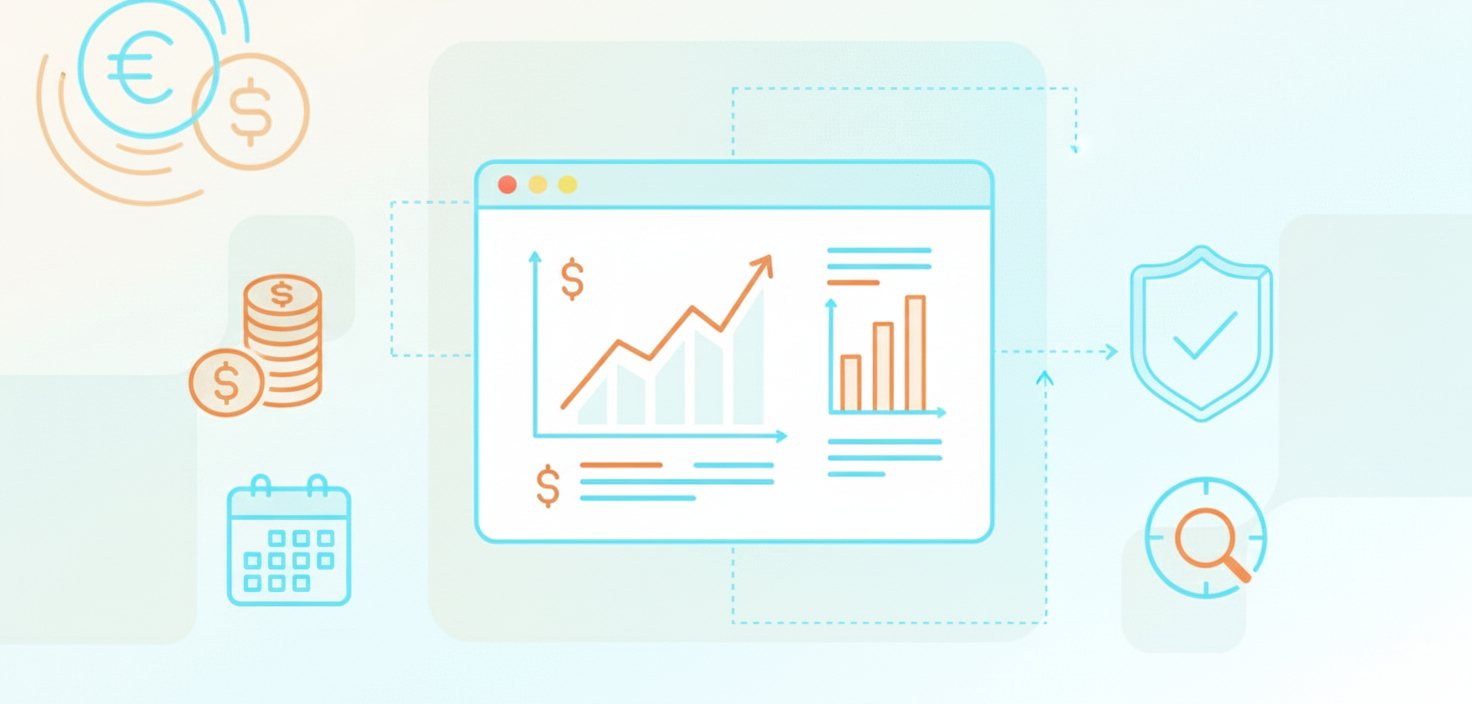gestion financière.
Qu'est-ce que la prévision des revenus SaaS ?

Qu'est-ce que la prévision des revenus SaaS ?
La prévision des revenus SaaS est le processus d'estimation des revenus futurs pour une entreprise de logiciels par abonnement.
Elle implique la prédiction des revenus récurrents issus des abonnements et nécessite une approche dynamique en raison de la nature des modèles SaaS.
La prévision sert de feuille de route financière, reliant la planification des flux de trésorerie, l'acquisition de clients et les stratégies produits aux objectifs commerciaux, tout en identifiant les risques et les opportunités.
Comment prévoyez-vous les revenus SaaS ?
La prévision des revenus SaaS comprend :
Pour élaborer une stratégie de croissance des revenus SaaS, commencez par prendre en compte :
- les tendances économiques
- les données de ventes historiques
- tendances du marché
- le comportement des clients.
Utilisez des méthodes spécifiques pour prévoir les revenus futurs, telles que la méthode linéaire, qui est basée sur les taux de croissance historiques.
Intégrez différents éléments dans vos prévisions, tels que :
- revenus récurrents
- l'acquisition de nouveaux clients
- ventes incitatives
- Attrition
- les métriques d'engagement
- les modèles d'utilisation
- Génération de prospects
- les taux de conversion
- les stratégies de tarification.
Utilisez l'analyse de scénarios pour tester différentes hypothèses et être mieux préparé aux conditions de marché imprévisibles, en vous concentrant sur des indicateurs clés tels que :
- ARPU
- ARR
- MRR
- COA
- LTV
- CAC
- le taux de désabonnement.
Employez des plateformes de BI et des outils d'analyse pour les processus de prévision, en visant la précision et l'adaptation à la dynamique du marché via des études de marché et la planification de scénarios.
Quels facteurs influencent les revenus SaaS ?
Les revenus SaaS sont sensibles à :
- la dynamique du marché
- Les tendances économiques, les politiques de prix des concurrents et les taux d'adoption du produit affectent le revenu, qui est dérivé de plusieurs métriques clés telles que l'ARR, le MRR, le GRR et le ‘magic number’.
- les délais de récupération du coût d'acquisition client (CAC), le modèle de revenus choisi, la scalabilité, la rétention client, l'utilisation du produit et les relations à long terme.
- le coût des opérations : les dépenses liées aux logiciels, au personnel et au marketing, ainsi que l'efficacité de l'entonnoir de vente et de marketing, la structure d'équipe et les modèles de rémunération
- les offres concurrentielles.
Comment le CAC impacte-t-il la prévision ?
Le CAC est une composante importante de la prévision des revenus des entreprises SaaS, car il représente le coût moyen d'acquisition d'un nouveau client payant.
La prévision précise du CAC permet aux entreprises de :
- planifier la croissance
- estimer les besoins des clients pour atteindre les objectifs de revenus
- évaluer la pérennité de la clientèle.
De plus, la confiance des consommateurs, les niveaux historiques de CAC, le nombre de marchés desservis et la coopération entre les ventes et les finances dans l'élaboration du modèle et l'expérimentation d'une mesure alternative des dépenses marketing moyennes (aMER) devraient être inclus dans le modèle.
Comment le churn affecte-t-il la prévision des revenus SaaS ?
Le churn est lié à la prévisibilité des prévisions de revenus SaaS en introduisant de la variabilité dans le potentiel futur génération de revenus.
Précis Attrition la prévision peut influencer La fidélisation de la clientèle stratégies, l'allocation des ressources et la précision des prévisions de revenus SaaS.
Intégrez l'analyse prédictive et en temps réel l'analyse des données pour identifier les signaux de désabonnement et éliminer l'effet des pertes de revenus potentielles.
Quel est le rôle de l'ARR dans la prévision ?
Dans les entreprises SaaS, le revenu annuel récurrent (ARR) est très important dans le processus de prévision des revenus car c'est le revenu attendu généré par Abonnements en un an.
La prévision précise de l'ARR aide à :
- une meilleure planification
- l'élaboration du plan de recrutement
- la communication avec les investisseurs
Les décisions stratégiques sont liées à la situation financière et aux possibilités d'expansion.
Considérez les étapes suivantes :
- Commencez par l'ARR et les MRR valeurs qui ont été collectées
- Examinez les entonnoirs d'abonnement et les modèles d'expansion (MRR d'expansion ou l'ARR).
- Créez un modèle financier détaillé, incluant une marge de sécurité pour une prédiction à long terme sûre et fiable.
Comment les données de l'entonnoir marketing améliorent-elles les prévisions de revenus SaaS ?
Les entonnoirs marketing sont liés au niveau de précision des prévisions de revenus SaaS en :
- fournissant des informations sur la progression des prospects
- suivant les taux de conversion
- l'identification des goulots d'étranglement dans le pipeline de vente.
Cela permet aux spécialistes du marketing de comprendre la probabilité de convertir un prospect, de préparer des campagnes ciblées et d'anticiper les futures tendances des ventes grâce à l'analyse prédictive.
L'apprentissage automatique et l'analyse en temps réel peuvent influencer la précision des prévisions commerciales concernant tendances du marché et le comportement des clients, affectant potentiellement l'efficacité des dépenses marketing.
Conclusion
La prévision des revenus SaaS est essentielle au fonctionnement d'une entreprise de logiciel en tant que service qui nécessite de prédire les revenus futurs.
Ces facteurs comprennent l'état du marché, le coût d'acquisition client (CAC), le taux de rétention ou le churn, le revenu annuel récurrent (ARR) et les informations sur l'entonnoir marketing.
La prévision des revenus SaaS peut influencer la croissance de l'entreprise, l'efficacité des ressources et l'anticipation des défis inhérents aux modèles d'abonnement.